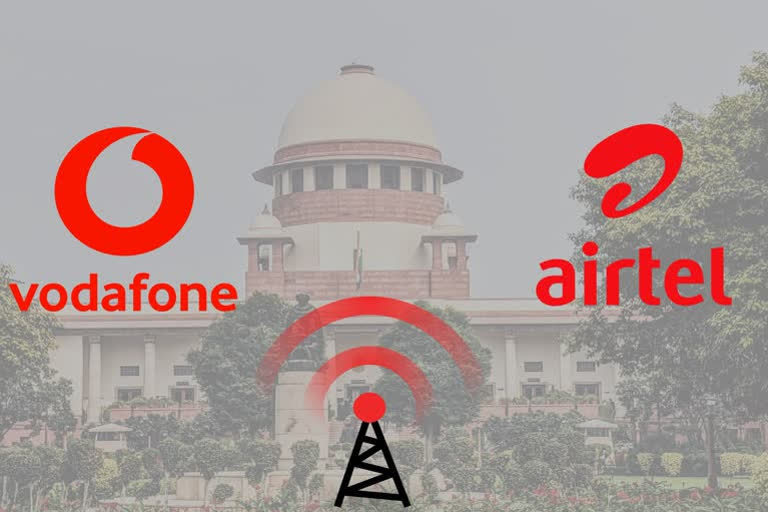Business Desk, ETV Bharat: In a major relief for telecom companies, the Supreme Court on Tuesday allowed staggered payment of adjusted gross revenue (AGR) dues over a period of 10 years till 31 March 2031.
The move will especially benefit debt-ridden Vodafone Idea Ltd, which had earlier said that it might have to shut down operations in India if it is ordered to pay its dues in one go.
The apex court’s decision on Tuesday puts an end to a long-standing dispute that was hanging like a sword over the telecom sector’s head. Here’s a look at the timeline of major events that ultimately led to today’s verdict.
1994: India’s telecom sector was liberalised under the National Telecom Policy 1994, after which licenses were issued to companies in return for a fixed license fee.
1999: After many service providers failed to pay the steep fixed licence fee, the government gave them an option to migrate to the revenue-sharing fee model as part of a relief package.
Under this model, mobile telephone operators were required to share a percentage of their adjusted gross revenue (AGR) with the government as annual license fee (LF) and spectrum usage charges (SUC) with effect from 1 August 1999. The LF and SUC were fixed at 8% and 3-5% of AGR respectively, based on the agreement signed between DoT and telecom firms.
2003: A legal dispute starts as some telecom operators moved the Telecom Disputes Settlement and Appellate Tribunal (TDSAT) challenging DoT’s definition of AGR. The DoT argued that AGR includes all revenues (before discounts) from both telecom and non-telecom services, while companies claimed that AGR should comprise just the revenue accrued from core services and not dividend, interest income or profit on sale of any investment or fixed assets.
2005: The Cellular Operators Association of India (COAI) also challenged the government’s definition for AGR calculation.
2006: TDSAT held that licence fee will be calculated only as a portion of the revenue that was related to the telecom licence, and not from other activities. TDSAT also sought Telecom Regulatory Authority of India’s (TRAI’s) recommendations on the definition of telecom and non-telecom activities.
The same year, TRAI issued recommendations on the items that need to be included in AGR.
2007: DoT challenged TDSAT’s jurisdiction in the Supreme Court. The apex court dismissed DoT’s appeal and directed it to raise its contentions before TDSAT. Meanwhile, TDSAT accepted most of TRAI’s recommendations made in 2006 and passed an order accordingly.
Later that year, DoT again moved the Supreme Court against the new TDSAT order.
2011: The Supreme Court held that TDSAT’s 2007 order should be set aside. However, it said companies can still challenge any demand made by DoT individually before TDSAT.
All telecom companies moved TDSAT challenging DoT’s licence fee demand.
2015: TDSAT set aside DoT’s demands and stayed the case in favour of telecom companies. It held that AGR includes all receipts except capital receipts and revenue from non-core sources such as rent, profit on the sale of fixed assets, dividend, interest and miscellaneous income.
2019: DoT moved the Supreme Court against the TDSAT order. Later that year, in a major blow to telecom firms, the apex court set aside TDSAT’s order and upheld the definition of AGR as stipulated by DoT.
16 January 2020: In January, Supreme Court orders telecom companies to pay Rs 92,000 crore to the government by 23 January. A few days later, Bharti Airtel and Vodafone Idea moved the Supreme Court in a bid to delay payments.
23 January 2020: DoT decided not to take coercive action against telecom firms till the time their appeals are pending in the apex court for relaxations in the order.
15 February 2020: The Supreme Court came down heavily on both telecom companies and DoT over non-payment of AGR dues. The court issued showcause notices to managing directors and directors of the errant companies asking why contempt proceedings should not be initiated against them.
It also drew contempt proceedings against a telecom department official who had ‘passed an order’ stating no coercive action should be taken against the telcos for not sticking to the Supreme Court’s stipulated 23 January payment deadline.
March 2020: Telcos started clearing their AGR dues partially. However, Vodafone, Bharti Airtel and Tata Telenor self-assessed their AGR dues which were significantly lower than DoT’s calculations.
In an 18 March hearing, the apex court held that no self-assessment can be done on AGR dues.
Meanwhile, DoT sought staggered payment of AGR dues by telecom companies over a period of 20 years. The plea also asked that telcos should not be charged a penalty and interests on penalty and principal beyond the date of the judgement.
June 2020: Hearing the plea on 20-year-timeline for staggered payments, SC directed telecom service providers to furnish revenue details and plan of action as to how they intend to clear the AGR dues.
August 2020: On 20 August, the top court reserved its order on a 20-year-timeline for staggered payment of AGR dues by telecom companies. During the hearing, it said if telcos are unwilling to pay, it will direct cancellation of spectrum allocation.
Later, on 24 August, the court reserved its judgement on the spectrum liability and non-payment of AGR dues by telcos under insolvency.



